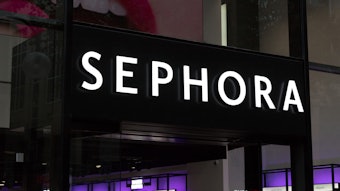
Ray Piergiorgi, COO, Perfumania Holdings, Inc., www.perfumaniaholdingsinc.com
Brands struggling financially could learn a lot from companies expanding their doors through 2009, especially during challenging economic circumstances. Some have argued that color cosmetics brands see the best sales from beauty consumers during such retail tight spots, due to the novelty of “little luxuries” like a new lipstick or a mascara, but for Perfumania Holding, Inc.’s chief operating officer, Ray Piergiorgi, it’s the fragrance channel that’s really making a difference. “People always want to feel good about themselves, especially in the tough times,” Piergiorgi says. “A good fragrance can do that for someone much more economically than a new dress or suit.”
Perfumania, a U.S.-based perfumery chain, competes against e-commerce outlets and bricks-and-mortar stores such as Sephora and Ulta, differentiating itself by selling 600 discounted designer fragrances—not as an afterthought to its bath and body products—but as the first point of purchase its customers encounter. Similar to its retail counterparts, Perfumania also offers cosmetics and skin care products, but its focus remains on introducing women to new fragrances through sampling—a feat not easily accomplished through online-only retailers. However, Perfumania.com still offers shoppers convenience for those seeking a specific product. “If you were to rank our ‘dot com’ business as a store, it would be our number one door,” Piergiorgi says. “In the past, it has run about 2.5% of our total sales.”
On average, a Perfumania customer visits the store four to five times a year, according to Piergiorgi, and is often greeted on a first-name basis by a fragrance sales specialist. This sort of customer-employee relationship is one Piergiorgi insists upon. From working as Wella’s U.S. CFO to starting at Revlon in 1986 as a senior accountant, a position he outgrew within six years as vice president of finance, Piergiorgi has garnered a vast amount of administrative, operational and financial experience. To this day, he admits his saving grace has been learning to sell products firsthand to consumers from behind the counter, a skill he learned from Geoffrey Donaldson, Revlon’s vice president, general manager, department stores division, at the time. “That is a lesson I follow today,” Piergiorgi says. “During my time at Perfumania, I have done every job we require our store managers to do. It is the only way to truly understand your business.”
Other than the importance of customer interaction, brand recognition also drives the retailer. “We use print ad imagery supplied by the manufacturers for our in-store signage to help the consumer identify with the brand image,” Piergiorgi says, which includes targeting ads to its 20% male consumer demographic.
A third distinction setting Perfumania apart from its competitors is the special attention it has given since 2005 to Spanish-speaking populations through store expansion in Southern Florida, Texas, Southern California, New York City and Puerto Rico. In 2008, Perfumania opened 53 new stores, bringing its total to 388 locations. In 2009, the perfumery chain will unveil additional newly designed store prototypes in select U.S. malls. The expansion will feature more celebrity fragrance launches and relatively unknown fragrance brands developed by start-ups from around the globe looking for U.S. distribution. “Fragrance is truly an international business,” Piergiorgi says. “Because of our quality sales associates, we can take these ‘unknown’ brands and sell them in our stores. These relationships are why we have the widest selection of fragrances in the U.S.”
After 20-plus years of working in the beauty industry, Piergiorgi understands the beauty market. “I don’t know if the industry is changing or consumers’ habits are,” he says, “but consumers are looking for lower prices and a wider selection. This has resulted in a shift from regional malls to outlet centers. All designers and manufacturers have outlet stores, and they carry all of the latest items and styles. This is where people are going to shop.”










